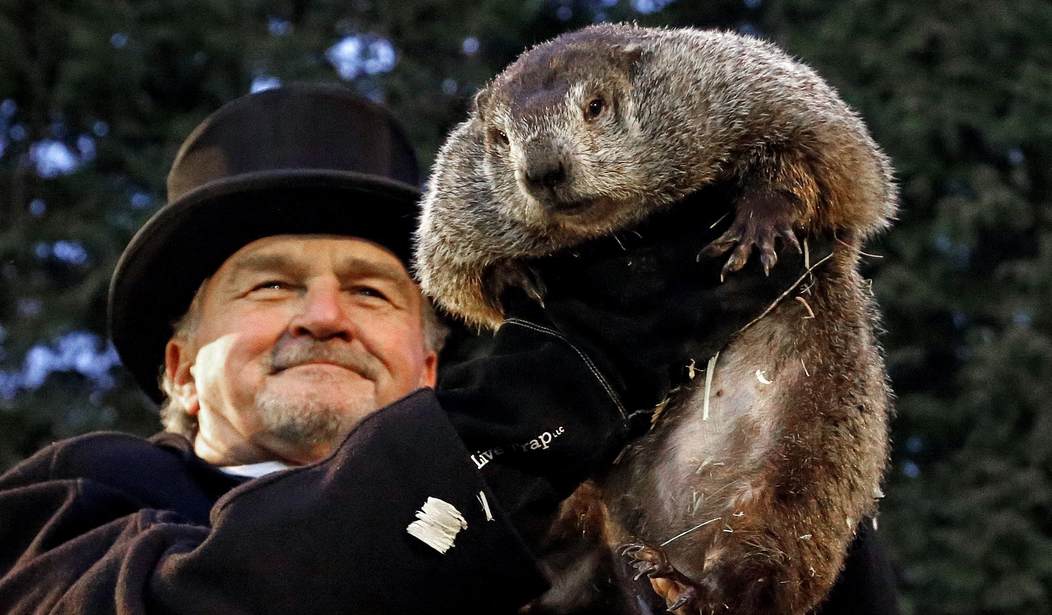Traditions are important. There are family traditions, there are national traditions, and there are local traditions. One that crosses the line from a beloved local tradition to a national tradition is the February 2nd (Groundhog Day) appearance of Punxsutawney, PA's own Punxsutawney Phil. Phil's appearance at the wonderfully-named Gobbler's Knob Park is a much-anticipated event wherein the big rodent is brought forth to predict the spring; tradition has it that if Phil sees his shadow, there will be six more weeks of winter.
Phil isn't the only groundhog to have this ability; he's just the most famous one.
This year, Phil predicts an early spring.
Since 1887, Groundhog Day has been a beloved American celebration in which seasonal weather predictions are left in the hands of a groundhog.
The superstitious observance began in Punxsutawney, Pennsylvania – where Punxsutawney Phil got his name and his start as a rodent meteorologist.
Each year on Feb. 2, thousands of spectators travel to the small town and gather at Gobbler’s Knob park to view Punxsutawney Phil’s prediction in real time.
If Punxsutawney Phil sees his shadow at daybreak and runs away, tradition dictates that he has predicted that there will be six more weeks of a chilly winter. If there is no shadow, he has predicted that spring will arrive early.
Phil didn't see his shadow this year.
And in 2024, Punxsutawney Phil announced that he did not see his shadow, making a rare prediction for an early spring. The announcement drew cheers and boos from the thousands gathered in Pennsylvania.
It was just the 21st time that the groundhog has predicted an early spring since the late 1900s.
While fun, scientifically speaking, this is the purest of woo, but it's intended as such; not everything, after all, has to be taken seriously, and a beloved local tradition is worth doing simply because.
Honestly, we could use an early spring here in the Great Land, where there are no groundhogs. They can't survive this far north, so it's unclear as to how far Phil's influence reaches. But this morning, when I left the house to walk over to the office, the mercury was huddled down in the bottom of the outdoor thermometer, shivering:
So, how often has Phil been right in his prediction? Well, he's been issuing his forecast since 1887 (that's a really old woodchuck) and his accuracy is less than stellar.
Phil's accuracy rate over the time period was 36%. Overall, the Stormfax Almanac says, Phil has only been right 39% of the time going back to his first recorded prediction in 1887.
However, the Punxsutawney Groundhog Club — which claims the same groundhog has been making predictions since the 1800s thanks to drinking the "elixir of life" — alleges, without evidence, that Phil has been right "100% of the time, of course!"
See Related: Anchorage Sees 'Pandemic of Snow'
WATCH: John Kerry Snaps When He Gets Confronted About His Climate Hypocrisy
That doesn't matter. We should love local traditions because they are local traditions. Traditions are important; they enhance our sense of community, they give us continuity, they bind a family, a town, or a nation together. That, alone, makes them worth observing — and not taking too seriously.
Their weather-forecasting abilities aside, groundhogs are pretty good eating. It tastes like a rabbit but with twice the edible meat. Good stuff.
















Join the conversation as a VIP Member